Stjørdalsøl — the tasting
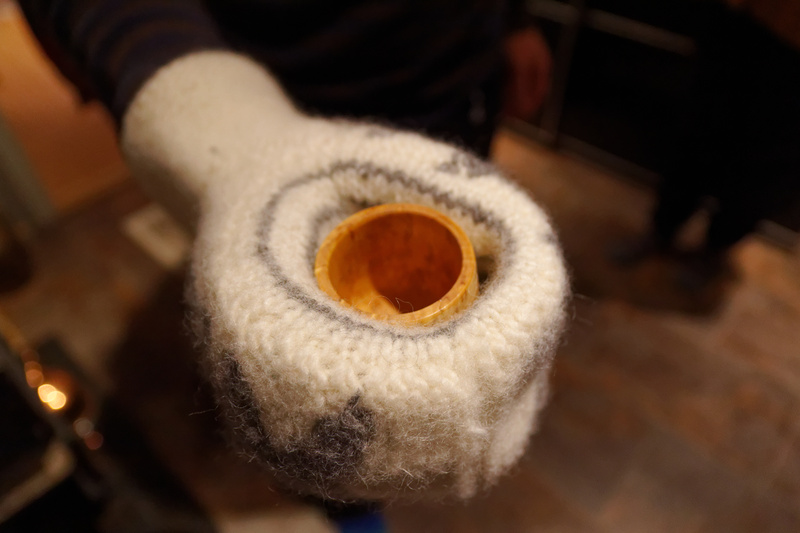
Beer glove, for winter beer tastings |
During our 2014 farmhouse ale expedition, Martin and I visited Stjørdal, a region in Norway famous for the many farmhouse brewers who still make their own malts in the traditional way. Roar told us that on December 26th there was a beer tasting at a cabin in the woods where 40-50 different beers were served. In fact, there were other tastings at different cabins, too, and he thought the total number of beers on offer might be as high as 200.
We tasted two of the local beers (Alstadberger, from Roar's malt, and one by Morten Granås), both of which were outstanding, and extremely interesting. So after we flew home, the thought of those 200 beers only available at forest cabins in the middle of Christmas stayed with us. Was there some way we could try them without bringing our families to celebrate Christmas in a hotel in Trondheim?
Eventually, Martin asked Roar if we could come for a visit in early January, and if Roar would then be able to collect some samples of beer from different brewers for us to try. Sure, Roar said, no problem at all. And so, one Friday evening in January 2016, Roar, Martin, my friend Amund, and I found ourselves at Roar's place, in front of a very strange array of bottles.
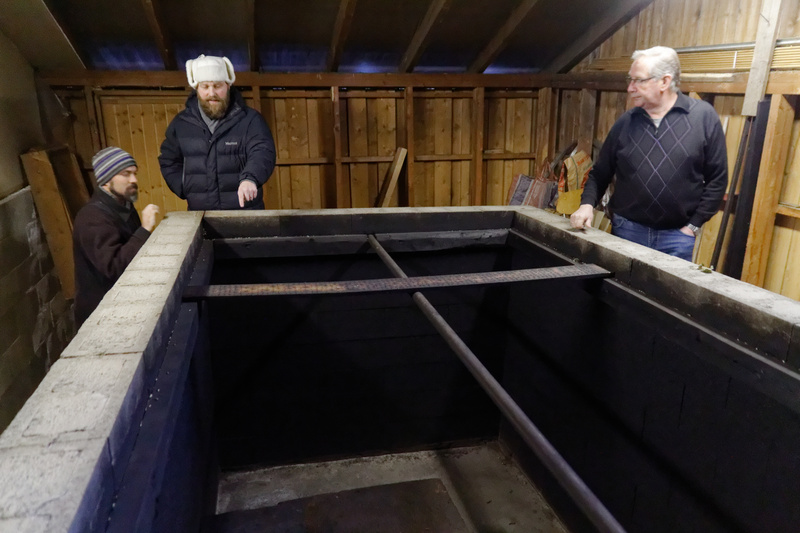
A malt kiln (såinn) with only one plank in place |
I guess before I go any further I should explain what was on that table. Historically, of course, farmhouse brewers all over Europe brewed beer from their own grain. That's why they could afford to make it: they weren't paying anything for the beer, just setting aside part of the grain harvest. Which of course meant they had to make the malts themselves. In Norway, the practice of malting yourself came very close to dying out entirely, and when the farmhouse brewing resurged from the 90s onwards they started buying the malts instead.
This is unsurprising, because making malts is not easy, and it takes a lot of work. Traditionally, people in Norway had dedicated buildings for malting, but by the 1970s most of those had fallen down or been torn down. So anyone wanting to pick up the old art of making your own malts would typically have to first find somewhere to buy grain (not so hard), learn the craft, then build a suitable building, and finally spend about 10 days malting for every batch. You can see why people decided to just buy the malts instead.
But for some reason people in Stjørdal decided that unless you made your own malts, you were not a true farmhouse brewer. As a result, just about all the farmhouse brewers in the area make their own malts. To make building and maintaining the malt house easier and more affordable they've joined together in "associations" (lag) that own a malt house communally.
They all use the same type of malt kiln, which is called a "såinn". By extension, the malt house is a "såinnhus", and the association is a "såinnhuslag". Generally they soak the barley, then sprout it in a wooden frame, and finally spread the green malt out on the planks on top of the såinn (see photo above).
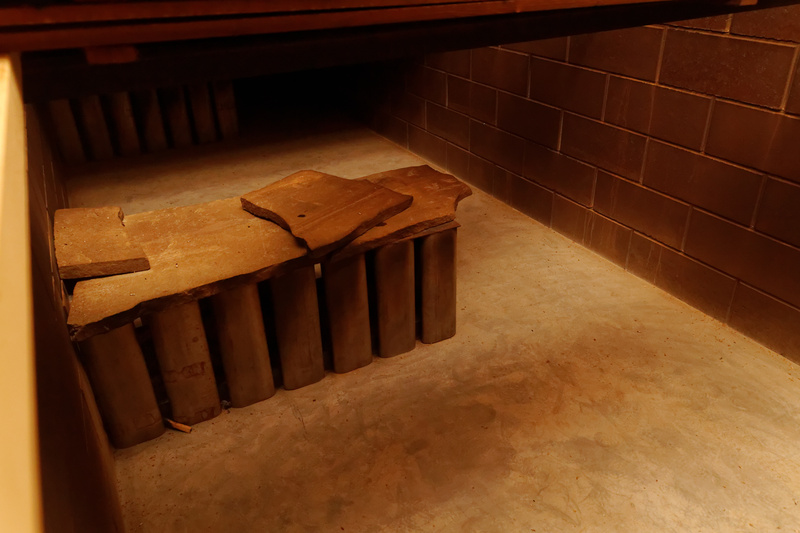
"Kjerringa" in the såinn at Klostergården brewery, Tautra |
Now that the malts are ready to dry, they light a fire inside the såinn. The fireplace is called "kjerringa" (the woman), and is shown in the photo above. The stone plates above the fireplace catch sparks and diffuse the heat, to reduce the risk of setting fire to the planks. The vertical distance from the fireplace up to the planks helps do the same thing, and also ensures the temperature for the malts doesn't get too high.
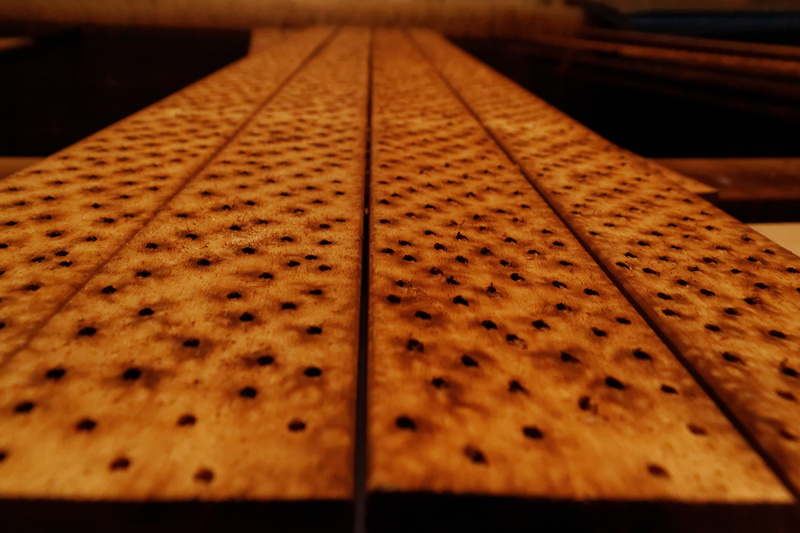
The planks on top of the såinn at Klostergården |
The planks are perforated by literally thousands of holes, which means that the smoke will seep up through the malts, giving them a powerful smoky flavour. The brewers here all use (as far as I know) alder wood to smoke the malts, and alder wood gives a very characteristic aroma, clearly different from that of the beech wood used in Germany. Intriguingly, alder wood is used to smoke all kinds of food in Voss, and it's also used for some gotlandsdricke. The alder wood smoke also adds colour, which is one reason why the beers have such a beautiful deep dark red-brown body.
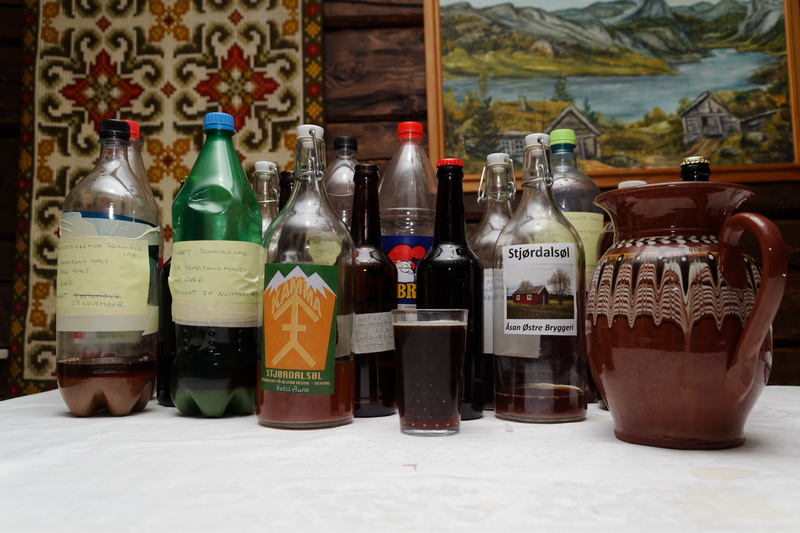
Ready for the tasting |
So, there we were, sitting at a table with 14 different beers, all of which were brewed from traditional home-made malts. There were some glass bottles, and a lot of plastic bottles. A couple had proper labels, but most simply had post-it notes taped to the front, with notes like "70% traditional malts, 30% pale malt, baking yeast, brewed November 27". Baking yeast was very common, but some had lager yeast, or commercial ale yeast. Quite a few had some low percentage of commercial malts mixed in. A couple of bottles had just the original soda label with a last name added in scrawly marker pen.
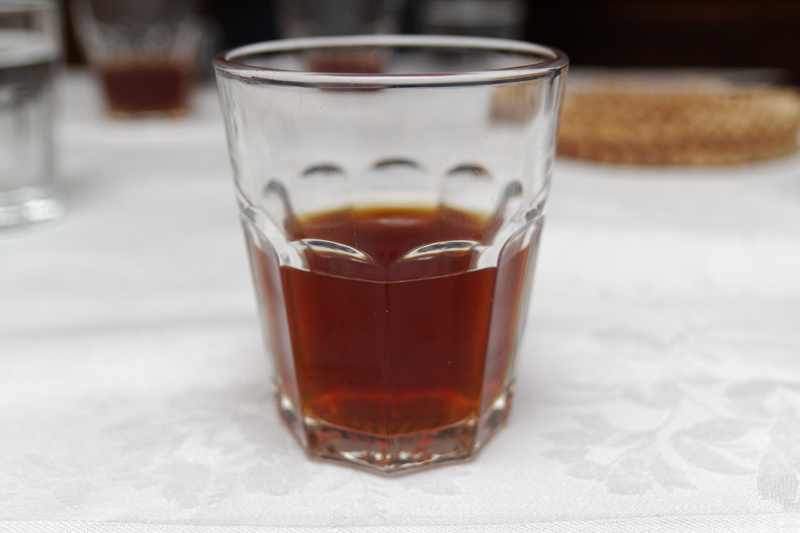
Stjørdalsøl |
Visually, they were all pretty similar. Slightly hazy, deep dark reddish brown, barely any head. The lack of a head is because these farmhouse ales have very little carbonation. Most were sweet, although some had light acid. Aroma-wise, they were all over the map. The first one had a massive aroma of barn, lingonberry, and campfire with juniper notes and light acidity. About the next one my notes say: "Smoked toffee. Vast diacetyl. OMG. Ashy smoky vanilla fudge. Hugely interesting, but not very good."
The flavours were all over the map. Some were harsh and rustic, others clean and delicate, and one I described as "semi-clean in a bizarre way." It was a really odd experience. After more than a decade as a hard-core beer enthusiast I thought I knew my beers, but clearly not.
Tasting notes for a beer just marked as "A": "Weird. Male sweat, smoke. Dryish sooty. I can't describe this. Extremely interesting. Roar says it's not untypical of stjørdalsøl. Lingering woody flavour. Faint acetone."
Tasting notes for the one with the nice label of the red house: "Fruity phenolic lingonberry aroma, plus dung. Sweet fruity pine and smoke taste. Nice! Lovely. Does have notes of dung and barnyard, though."

Pondering |
Eventually, though, we were reduced to just shaking our heads in wonder. These beers were way beyond anything any of us, except Roar, had ever tried before. It got to the point where we had to admit that we didn't really have the frame of reference necessary to say whether the beers were good or not. It was a bit like your first meeting with lambic. At that point, the ability to distinguish good lambic from bad would be simply overwhelmed by the strangeness of it all.
The next morning we were sitting at Roar's breakfast table, trying to make sense of what had happened. In the end we agreed it had been like starting out all over again as a beer drinker, lost in a landscape where you don't know the landmarks, and have to learn them all over again.
I'd say it was far and away the most interesting beer tasting I've experienced, in 15 years of beer geekery. And so far we've only gotten to Saturday morning.
From this point onwards I started thinking that there seemed to be enormous flavour potential in the traditional means of producing malts. Particularly as these guys were all using barley from the same area and malting with the same type of equipment.
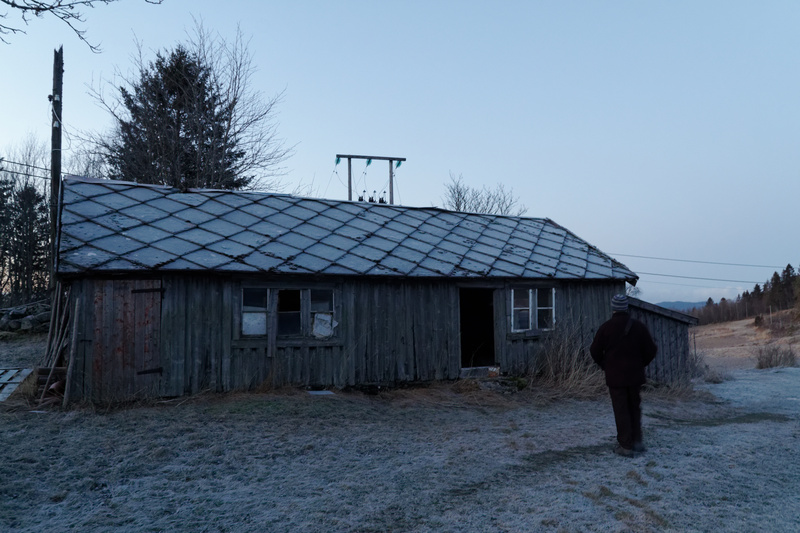
19th century såinnhus near Roar's house |
- Martin's report from the weekend in BeerAdvocate magazine.
- My survey of Norwegian farmhouse ale styles, of which stjørdalsøl is one.
Similar posts
Alstadberger
Driving hurriedly on from Storli Gard, we arrived at the island of Tautra outside Trondheim late at night
Read | 2014-09-03 19:59
Hegra maltøl at Granås Gård
Our final stop on the trip was actually the first to be planned
Read | 2014-09-09 17:20
The Mystery of the Pierced Planks
In March 2021 Norwegian archaeologists posted the photo above on Facebook, asking their followers what they thought these planks might have been used for
Read | 2022-10-01 12:54
Comments
Alec Latham - 2017-03-11 15:59:17
It's amazing how something people have invested so much in - the såinnhus, is completely unknown to the wider world. This isn't just kitchen brewing but bespoke buildings. On a slightly tangental topic (not Norway), my local beer shop has started selling Lithuanian beers. So far I've only read about them in your articles. Next time I go in I'll take a shot and show you which ones.
Martyn Cornell - 2017-03-12 10:33:14
Marvellous. What a huge pity no description seems to have survived of farmhouse beers in the British Isles. It's certainly true that farmers still malted their own grain right through to the early 19th century, but their emethds appear unrecorded.
Lars Marius Garshol - 2017-03-12 11:31:19
Thank you, Alec and Martyn.
@Alec: Yeah, it would be interesting to know which beers those are. I'm sure there are more people who are interested.
@Martyn: Well, actually, I've found some documentation of British farmhouse brewing, and I'm sure there exists lots more. I haven't done a blog post on it because the material is kind of disconnected and doesn't really come together to form any clear picture. But I guess it might be of interest even so, so perhaps I should do a blog post on it.
Also, you shouldn't assume that farmhouse brewing in the British Isles has necessarily ended.
Lee - 2017-03-16 06:59:22
Lars,please,please,please do write that post on British farmhouse brewing! I have been hoping for something like that for a very long time.